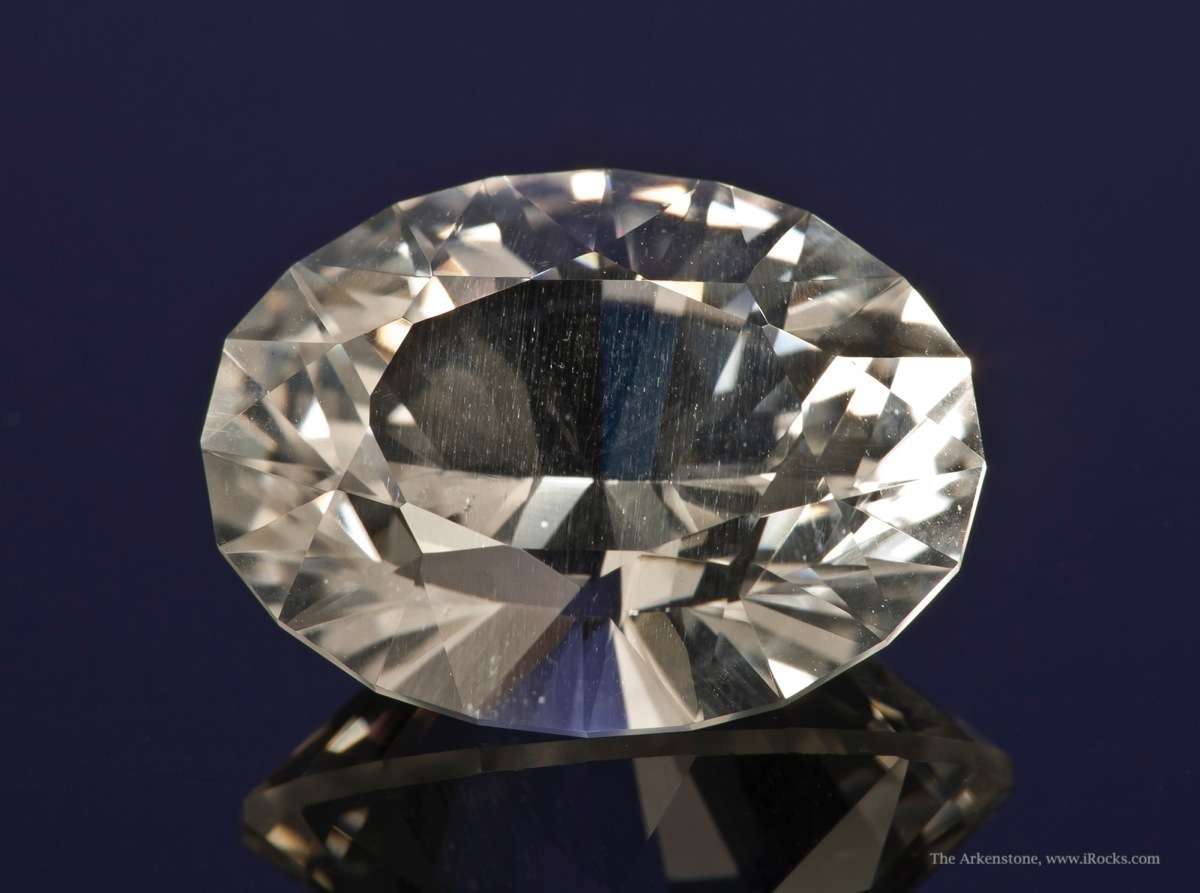Phenakite Value, Price, and Jewelry Information
Rare phenakite is a very hard gem material suitable for jewelry. Usually colorless, cut stones have little fire but can be very bright.
2 Minute Read
Rare phenakite is a very hard gem material suitable for jewelry. Usually colorless, cut stones have little fire but can be very bright.
Start an IGS Membership today
for full access to our price guide (updated monthly).Phenakite Value
What is Phenakite?
Phenakite lends its name to the phenakite mineral group. The gemstone known as phenakite itself is the beryllium analogue of this group. The gem willemite is the zinc analogue. (Although a very rare element, beryllium also occurs in well-known gemstones such as emeralds and alexandrites).
Does Phenakite Make a Good Jewelry Stone?
Phenakites can show pale yellow, pink, and brown colors, as well as no color. (You'll seldom see very rare red gems cut from Russian material). With little dispersion, these gems hadn't generated much excitement beyond collectors of unusual minerals. However, the surge of New Age interest in crystals in the 1990s caught up with this stone. With or without mystical auras, exceptional hardness (7.5 to 8) and indistinct cleavage make this a good, if unusual, stone for any type of jewelry.
Recently, gemological laboratories have confirmed cat's eye gems cabbed from phenakites from Madagascar and Sri Lanka. The potential for this striking visual effect has contributed to phenakite's new appeal.
Are Phenakites Safe to Wear?
As finished gemstones, phenakites pose no health hazards. Concerns have been raised over the safety of these gems since they contain beryllium. However, this element is stable within phenakite and isn't bio-reactive.
On the other hand, faceters should take precautions against inhaling and accidentally ingesting particles when working with phenakite. Of course, faceters should take these same precautions when cutting any gem material.
The Mindat forum contains an informative thread regarding phenakites and purported health risks.
Are There Synthetic Phenakites?
Labs have synthesized this mineral, starting with a seed of willemite, no less. However, there's no known jewelry use for this material.
When found in emeralds as inclusions, phenakites themselves commonly indicate synthetic origins.
Radiation treatments can turn colorless phenakites yellow-brown.
Distinguishing Phenakite from Quartz and Diamond
Whether rough or finished, this mineral can live up to its etymology as a "deceiver." You might encounter quartz gems erroneously or deliberately presented as phenakites, since they can resemble each other. However, phenakites have higher refractive indices, birefringence, and specific gravity values than quartzes.
In at least one case, near-colorless phenakite rough was submitted for gemological analysis as suspected diamond. Despite outward similarities, including trigon-like features, these gems have very different optical and physical properties. For example, phenakite has lower dispersion, hardness, and specific gravity than diamond. Diamond also has no birefringence.
Where are Phenakites Found?
Gem-quality sources include the following:
- United States: Pala County, California; Colorado (Pike's Peak area); Lords Hill, Maine; New Hampshire; Virginia (crystals up to 2 inches across).
- Habachtal, Austria: small gemmy colorless or yellowish crystals.
- San Miguel de Paracicaba, Brazil: large colorless crystals, often clean and cuttable.
- Russia: reddish color gems.
- Czech Republic; France; Madagascar; Myanmar; Klein Spitzkopje, Namibia; Nigeria; Kragero, Norway; Slovakia; Sri Lanka; Switzerland; Usugara district, Tanzania.
Stone Sizes
Faceted gemstones normally range between one and five carats in size.
Crystals up to 5 x 10 x 18 cm have been found, although usually heavily flawed. The largest known rough was a pebble found in Sri Lanka. Weighing in at 1,470 carats, it cut a 569-ct clean gem and several smaller stones. The large stone has many needle-like inclusions.
- Smithsonian Institution (Washington, DC): 22.2 (colorless, Russia); 21.9 (colorless, Brazil).
- National Museums of Canada (Ottawa, Ontario): 23.41 (colorless, Brazil).
- Private Collection: 21.21, 19.17 (colorless, Russia).
Caring for Phenakites
These gems require no special care. See our Gemstone Jewelry Cleaning Guide for care recommendations.
This video shows the finished 35.95-ct Nigerian phenakite in full view. Video © Dan Stair Custom Gemstones. Used with permission.
Joel E. Arem, Ph.D., FGA
Dr. Joel E. Arem has more than 60 years of experience in the world of gems and minerals. After obtaining his Ph.D. in Mineralogy from Harvard University, he has published numerous books that are still among the most widely used references and guidebooks on crystals, gems and minerals in the world.
Co-founder and President of numerous organizations, Dr. Arem has enjoyed a lifelong career in mineralogy and gemology. He has been a Smithsonian scientist and Curator, a consultant to many well-known companies and institutions, and a prolific author and speaker. Although his main activities have been as a gem cutter and dealer, his focus has always been education. joelarem.com
International Gem Society
Related Articles
Black Diamond Value, Price, and Jewelry Information
Chameleon Diamond Value, Price, and Jewelry Information
Gray Diamond Value, Price, and Jewelry Information
Green Diamond Value, Price, and Jewelry Information
Latest Articles
Cutting a 294-ct Trilliant Morganite: An Interview with Steve Moriarty
Tourmaline Engagement Ring Stones: the Ultimate Guide
Chabazite Value, Price, and Jewelry Information
Recutting Diamonds and Colored Gemstones
Never Stop Learning
When you join the IGS community, you get trusted diamond & gemstone information when you need it.
Get Gemology Insights
Get started with the International Gem Society’s free guide to gemstone identification. Join our weekly newsletter & get a free copy of the Gem ID Checklist!
